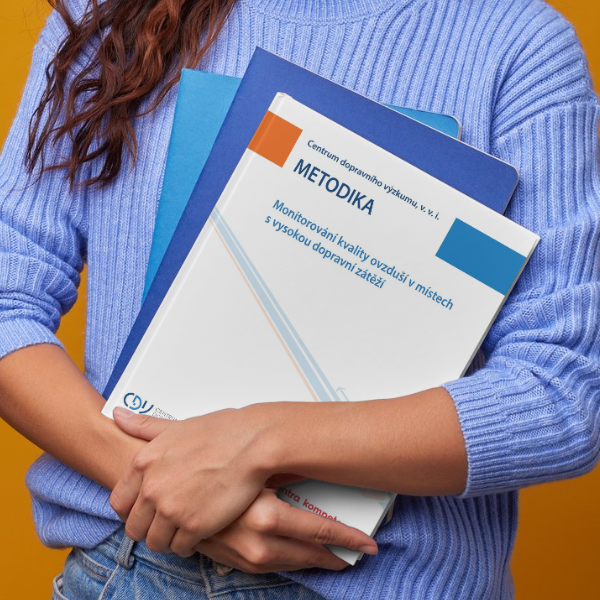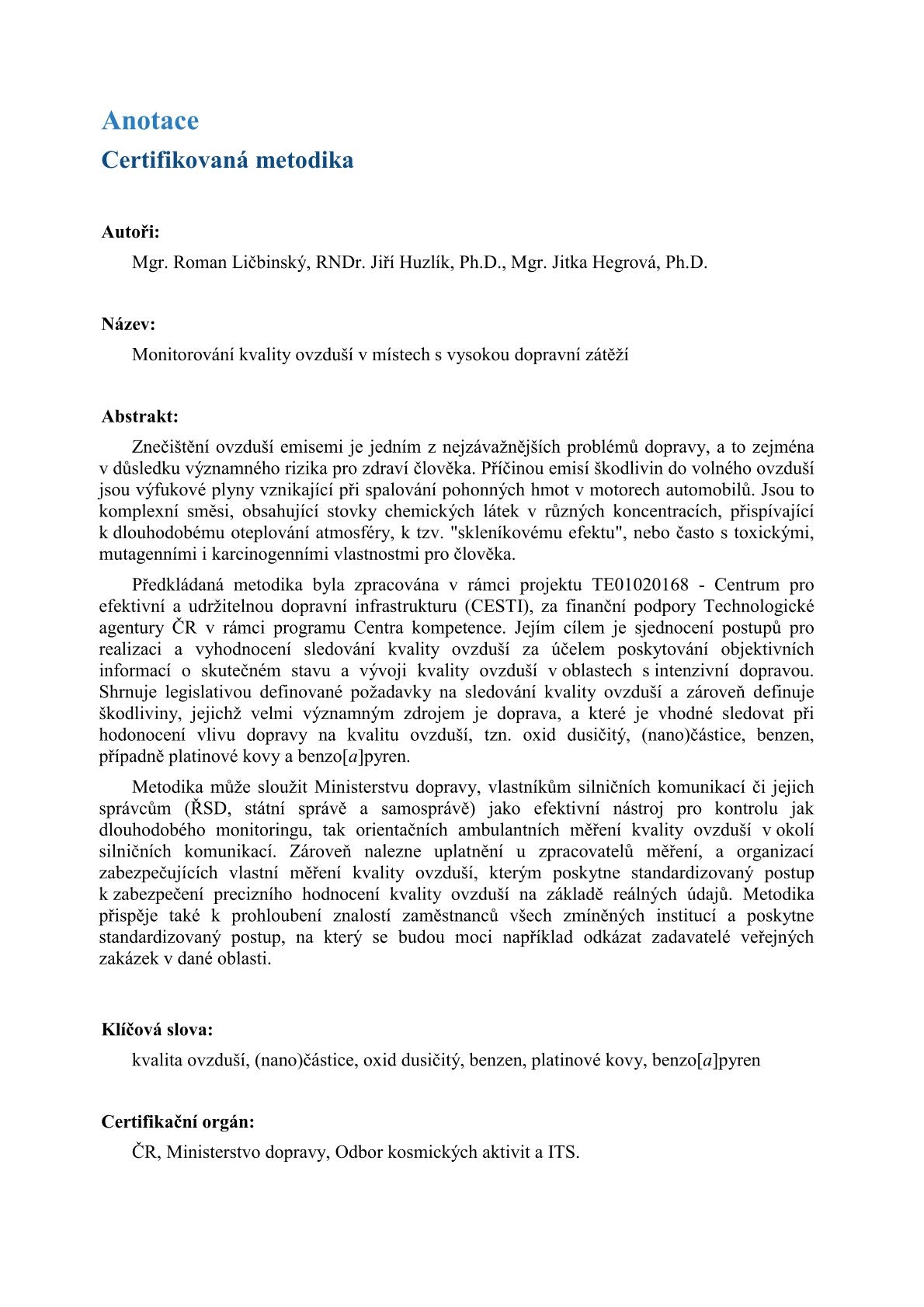Printed publication
Air quality monitoring in places with high traffic load
Air quality monitoring in places with high traffic load
Couldn't load pickup availability
The aim of the methodology is to unify procedures for the implementation and evaluation of air quality monitoring in order to provide objective information about the actual state and development of air quality in areas with intensive traffic. It summarizes the requirements for air quality monitoring defined by legislation and at the same time defines pollutants, the very important source of which is transport, and which should be monitored when evaluating the impact of transport on air quality, i.e. nitrogen dioxide, (nano)particles, benzene, possibly platinum metals and benzo[a]pyrene.
The methodology can serve the Ministry of Transport, road owners or theirs
administrators as an effective tool for controlling both long-term monitoring and indicative ambulatory measurements of air quality in the vicinity of roads. At the same time, it will be used by measurement processors and organizations providing their own air quality measurements, providing them with a standardized procedure to ensure a precise assessment of air quality based on real data. The methodology will also contribute to deepening the knowledge of the employees of all the mentioned institutions and provide a standardized procedure to which, for example, public procurement contractors in the given area will be able to refer.










Detail
Author
- Ličbinský R.
- Huzlík J.
- Hegrová J.
Content
1. Objective of the methodology
2. Introduction
2.1. Principles of measuring concentrations of pollutants in the air
2.2. Binding regulations, basic terms
3. Methodological part
3.1. General requirements for air quality measurement
3.2. Measured parameters
3.3. Measurement methods
3.4. Principles of measuring site design
3.5. Assessment of the level of air pollution
4. Comparison of the novelty of procedures
4.1. Instruments using reference methods for air quality monitoring
4.2. Other instruments for measuring air quality
5. Description of the application of the certified methodology
6. Economic aspects
Appendix 1 - Sources and properties of selected pollutants in the air
Dedication
This methodology was co-financed with the state support of the Technology Agency of the Czech Republic as part of the Competence Center Program, within the framework of project TE01020168 – Center for Efficient and Sustainable Transport Infrastructure (CESTI).
www.tacr.cz
Colophon
Year of publication
2017









